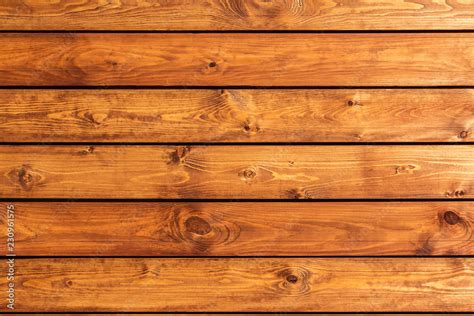Introduction: Embark on a DIY Speed Boat Adventure! Ready to build your own wooden speed boat? This step-by-step guide will walk you through the process, from gathering materials to launching your masterpiece. Building a wooden speed boat is a challenging but rewarding project, offering a unique blend of craftsmanship and engineering. This guide provides a simplified approach, suitable for beginners with some woodworking experience. Remember to always prioritize safety and consult with experienced boat builders if needed.
Step 1: Gathering Your Materials and Tools First, you'll need to collect all the necessary materials and tools to kick off your project. The list may vary slightly based on the specific plans you choose, but here's a general overview: Plywood: Marine-grade plywood is essential for the hull. Determine the required thickness and quantity based on your boat plans. Lumber: Various types of lumber will be needed for the frame, stringers, and other structural components. Common choices include cedar, pine, or mahogany. Epoxy Resin and Hardener: This is the adhesive and sealant that will hold everything together and waterproof your boat. Fiberglass Cloth: Reinforces the hull and adds durability. Fasteners: Stainless steel screws, nails, and bolts are recommended to prevent corrosion. Paint and Varnish: For finishing and protecting your boat from the elements. Hardware: Steering system, throttle, propeller, engine mounts, and other necessary hardware components. Safety Gear: Life jackets, fire extinguisher, and other safety equipment. Tools:
- Saw (Circular saw, jigsaw, hand saw)
- Drill and drill bits
- Sander (Orbital sander, belt sander)
- Clamps
- Measuring tape
- Pencil
- Safety glasses
- Respirator or dust mask
- Gloves
Step 2: Prepare Your Workspace and Plans Prepare a well-ventilated and spacious workspace. Clear the area of any obstructions and ensure you have adequate lighting. Lay out your chosen boat plans and familiarize yourself with all the dimensions, instructions, and diagrams. Careful planning is critical for a successful build. Consider building a temporary frame or strongback to support the hull during construction. This will help maintain the correct shape and alignment.
Step 3: Building the Frame Using your plans, cut the frame components from lumber. This typically includes the stem, stern, frames (ribs), and transom. Assemble the frame on the strongback, ensuring everything is square and aligned according to the plans. Use epoxy resin and fasteners to join the pieces together securely. Check for any discrepancies and make necessary adjustments before proceeding.
Step 4: Installing the Stringers and Chine Logs Stringers are longitudinal supports that run along the length of the hull, providing strength and stiffness. Chine logs are located at the junction of the hull sides and bottom. Attach the stringers and chine logs to the frame using epoxy and fasteners. Ensure they are properly aligned and securely fastened to the frames.
Step 5: Sheathing the Hull with Plywood Carefully cut the plywood panels according to your plans, taking precise measurements. Begin attaching the plywood to the frame, starting from the stem and working your way towards the stern. Use epoxy and fasteners to secure the
plywood to the frame, stringers, and chine logs. Overlap the seams slightly and trim them flush after the epoxy has cured. Use clamps to hold the plywood in place while the epoxy dries.  makeitwood.org
makeitwood.org  stock.adobe.com
stock.adobe.com  pngtree.com
pngtree.com

Step 6: Fiberglassing and Fairing the Hull Apply fiberglass cloth to the hull, saturating it with epoxy resin. This will create a waterproof and durable outer layer. Use a squeegee or roller to remove any air bubbles and ensure the fiberglass is evenly saturated. After the epoxy has cured, sand the hull to create a smooth and fair surface. Fill any imperfections with epoxy filler and sand again. This process may require multiple coats of epoxy and sanding to achieve a perfectly smooth finish.
Step 7: Installing the Deck and Interior Cut and install the deck plywood, following the same procedure as the hull sheathing. Install any interior components, such as seats, consoles, and storage compartments, according to your plans. Ensure all components are securely fastened and properly aligned.
Step 8: Installing the Engine and Hardware Install the engine according to the manufacturer's instructions. Ensure it is properly aligned and securely mounted. Install the steering system, throttle, propeller, and other necessary hardware components. Connect all the necessary cables and wires, following the wiring diagrams provided with your plans.
Step 9: Painting and Finishing Prepare the surface for painting by sanding it smooth and applying a primer coat. Apply several coats of marine-grade paint to the hull and deck, allowing each coat to dry completely before applying the next. Apply several coats of marine varnish to the wooden trim and interior components to protect them from the elements.
Step 10: Final Checks and Launching Before launching your boat, carefully inspect all components to ensure they are properly installed and functioning correctly. Check the engine, steering system, throttle, and other systems. Test the boat in a controlled environment before taking it out on open water. Always wear a life jacket and follow all safety regulations.
Conclusion: Enjoy Your Homemade Speed Boat! Congratulations! You have successfully built your own wooden speed boat. This is a significant accomplishment that requires dedication, skill, and patience. Now, it's time to enjoy the fruits of your labor and experience the thrill of boating in your own creation. Remember to maintain your boat regularly and always prioritize safety on the water. Happy boating!
0 komentar:
Posting Komentar